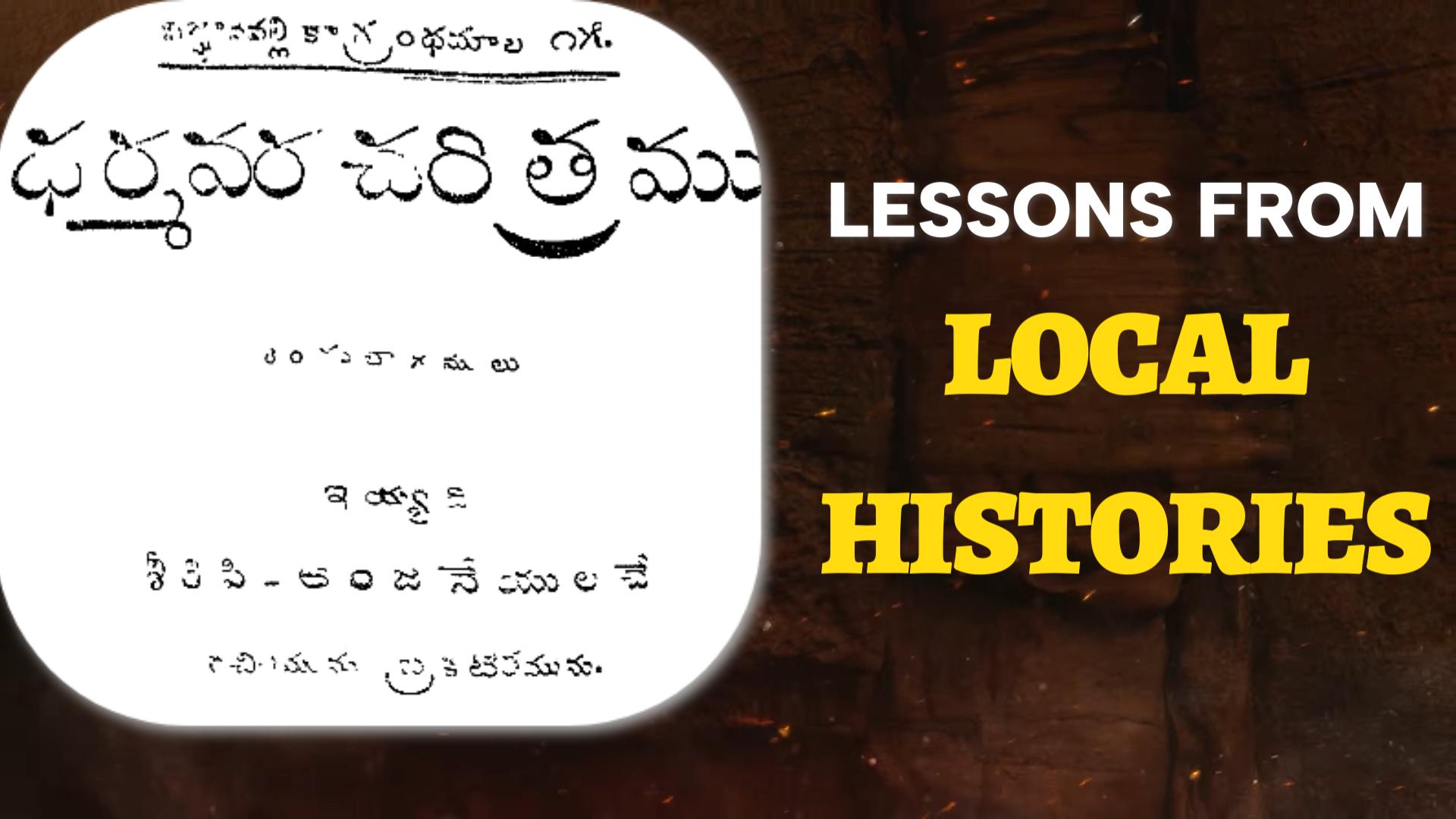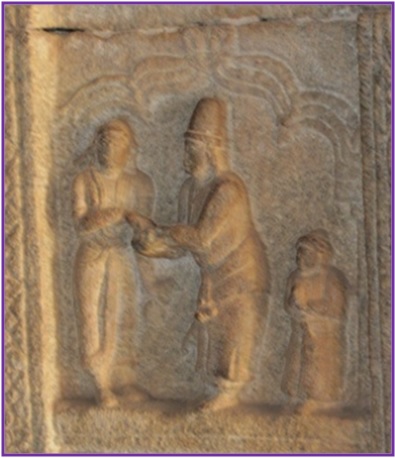HAMPI VITTHALA – REVIEW OF DR. C. NARAYANARAO & M.G. KHARE ARTICLES
As part of essay series on the historicity of Vitthala of Hampi, following two articles were published earlier.
-
KRISHNADEVARAYA & VITTHALA OF PANDHARAPUR BY M.G. KHARE
-
THE DATE OF CONSTRUCTION OF VITTHALA TEMPLE AT VIJAYANAGARA BY N. VENKATARAMANAYYA
This article is an attempt to review and analyse the contents of the above articles.
REVIEW OF M.G. KHARE & DR. C. NARAYANARAO ARTICLES:
Mr. M.G. Khare, in his article written in 1936, tries to solve the riddle of Vitthala of Hampi stating that the Vitthala might have come from Pandharapur. He takes support of the popular legends told in Maharashtra and most importantly the shloka of Sri Vadiraja Tirtha [c.1480-1600] taken from his Samskruta work titled “Tirtha Prabandha” wherein Sri Vadiraja hints that the Vitthala of Hampi has come from a place other than Hampi.
Mr. Khare opines that:
Vadirajatirtha, a Madhva saint, who was nearly contemporaneous with Krishnaraya has left for us a work Tirtha Prabandha written about Saka 1493 (1571 AD) which refers to many holy places and in which we find the following interesting verse:
चौर्यान्मात्रुनिबद्धचारुचरणः पापौघचौर्याद्बुधै-
ब्रद्धस्त्व पथि पुंडरीकमुनिना जारॆति संबॊधित
तुंगातीरगतॊसि विठल भियॆर्व न्याकृतिर्वाछित
वॆत्त्रूणा यदि मे न ददास्यसि पदं त्वत्संस्थितं कथ्यते
The third line of this verse clearly states that Vitthala had gone to the banks of Tungabhadra i.e. to Vijayanagara. But in it also occurs the Anyakrih which is to be construed with Vitthala and which may mean that Vitthala went to Tungabhadra in another form.
In that case the natural inference will be that the Vijayanagara image of Vitthala was different from the Pandharapur one. But unfortunately we do not know the exact year in which the above work was composed.
After the battle of Rakkasi Tangadgi, there was a general molestation of Vijayanagara temples in which the original Vitthala image might have been broken and Vadirajatirtha might be referring to a new image installed there since then. But the question must remain unsettled till we know the exact date of composition of Tirthaprabandha and till we find the real image or images consecrated in the temple.
Dr. C. Narayana Rao, in his article, discards the proposition of Mr. Khare and dismisses Sri Vadiraja’s shloka as untenable. He writes:
Mr. Khare mentions a verse from the Tirtha Prabandha of Vadirajatirtha, the Madhva saint, which refers to the migration of Vitthala. But some amendments had to be made to the verse for it to yield any sense and even the amended verse shows us that the image at Vijayanagara is different from the one at Pandharpur. But Mr. Khare opines that the original image was broken after the battle of Talikota and Vadirajatirtha refers to another image that may have been newly installed.
While Mr. Khare feels sure that the image was brought from Pandharpur to Vijayanagara but never taken back to Pandharpur, one fails to understand why he should cling to a story which he has himself taken so much pains to disprove.
ANALYSIS OF THE ABOVE ARTICLES:
Though I’m nowhere near to the scholarship of these two learned men, I, as being a follower of Sri Madhva-Vadiraja, wish to put forward my take on their views.
- Sri Vadiraja not only composed poem on Vitthala of Hampi, he also composed poems on Pandharapura Vitthala. While the poem on Vitthala of Hampi comes in Purva Prabandha [Treatise on Eastern Holy Places], the shlokas on Pandharapura Vitthala come in Uttara Prabandha [Treatise on Northern Holy Places]. Please see the shlokas with translations here.
- Thus, there should not be any confusion about the authenticity of Sri Vadiraja’s description of Vitthala of Hampi as he did visit Pandharapur and saw the Vitthala of that place. In fact, both the descriptions i.e. of Hampi and Pandharapura must be studied together to identify similarities and differences between the two Vitthalas.
- In his Pandharapura shlokas, Sri Vadiraja gives a complete picture of the Vitthala of Pandharapur. His description matches with the present vigraha that we seen in Pandharapur temple. Hereunder is the reproduction of the translation made by good friend Hariprasad Nelliteertha in his Tirthaprabandha Blog.
Sri Vadiraja tirtha gives a beautiful commentary on why the Vittala murthy in Pandarapura is in a certain way. He highlights the philosophical meaning behind the appearance of the murthy.
The lord’s idol is near the banks of the river – hence one must always reside in pious places.
Vittala isn’t wearing any dress – hence one must give up all material desires and show virakti.
Lord’s murthy has shankha chakra mudras – hence all must adopt these vaishnava signs.
One finger of vittala is pointing to his feet – reminding devotees that they must all always meditate on his feet.
Vittala is holding his waist with one hand – telling devotees that those who do bhakti in him shall never face wordly problems beyond a limit.
Vittala has placed a stick between his thighs – warning people that if they don’t follow the noble path, he shall punish them.
4. In Hampi shloka, Sri Vadiraja has not given any description of the physical form of Vitthala. Instead he narrates the traveling sort of narration. Here is the translation of Hampi Vitthala shloka by Hariprasad.
O Vittala! Due to your thieving (activities) you were tied to a pole by your mother; Later you stole heaps of sin from learned people and were bound by them (with their devotion); (Next) on the way you were addressed as a paramour by sage Pundarika; Having put on a different appearance, you came here to the banks of Tunga even while granting desires to those who know your habit of stealing and courting (women); In case you do not grant me my desire (of moksha) – I shall narrate (to all) your tales (of stealing and courting).
From the above it can be understood that Vitthala i.e. Krishna has moved towards south from his northern abode i.e. Brindavana as He was fed up for being called as a thief. In the south, he reached a pace where Pundarika Muni residing. This muni recognised that it is Krishna who was famous for flirting with women and hence addressed Him as a paramour. Up on receiving this chide from a dearest devotee, Vitthala [Krishna] vacated that place and reached the banks of Tungabhadra, at which place, Sri Vadiraja saw him staying. “So, hey Vitthala,” says Sri Vadiraja, “grant me my wish of reaching Moksha. Otherwise I will reveal your original identity (of being a thief & paramour) to one and all.”
Here I wish you to read a bit more about Sri Vadiraja Tirtha’s Tirtha Prabandha to understand how important it is to take the words of him as ‘matter of fact‘ than a mere poetical expression or fiction. Also read this excellent analysis by Hariprasad of Sri Vadiraja’s poem on Ayodhya and its relevance in understanding temple destruction happened there.
Thus, Sri Vadiraja is not only a master of language and poetry but also a wonderful historian who recorded the conditions prevailing in the places that he visited during his pilgrimage. This complete understanding of Sri Vadiraja’s caliber is much needed to fathom the depths of allegorical meanings hidden by him in his shloka on Vitthala of Hampi.
A FRESH REVIEW OF TIRTHA PRABANDHA SHLOKAS:
So, when seen from this angle, the shloka of Sri Vadiraja on Hampi Vitthala sheds lot of light on the conditions prevailing at Pandharapur, the original abode of Vitthala and the role of Vijayanagara in preserving the Vitthala Bhaktimarga by creating a parallel place to worship. In order to decode the hidden meaning, let me list the important keywords from that shloka.
- Vitthala & his mother (mAtru)
- Pundarika (puMDarika muni)
- Banks of River Tungabhadra (tuMgAtIra)
- Different appearance (anyAkRuti)
- Original nature (saMsthiti)
Let me try to link the above keywords with the persons & places that they denote.
- First keyword denotes Yashoda & Brindavana.
- Second one denotes Pundarika & Pandharapura.
- Third keyword refers to Vijayanagara or Hampi.
- Fourth keyword says that Vitthala has taken a different form than the usual one.
- Fifth one hints what could have been the original or usual form of Vitthala.
Here I wish to inform the readers about another unmissable aspect of Tirtha Prabandha.
At the end of his work, while writing phalashRuti, Sri Vadiraja declares:
नानावृत्तं स्वयात्राक्रमपरिचितसुक्षेत्रमाहात्म्ययुक्तं
शब्दालङ्कारबद्धं शमलकुलहरश्लाघनीयर्थाहृदयम् |
श्रीनाथप्रीतिहेतोर्हयवदनकृपाम्बोधिसम्भूतरत्नं
चक्रे तीर्थप्रबन्धं बहुगुणभरितं वादिराजो यतीन्द्रः ||
Translation by Hariprasad:
The best amongst the yatis, by the name of Vadiraja, composed the work called Tirthaprabandha – containing numerous vruttas, narrating the greatness of the kshetras that became known due to his own planned sanchara, including many alankaras of the words, containing enchanting meanings that can destroy the entire mound of sins, which is like a jewel that was born in the ocean of the compassion of lord hayagriva, and full of auspicious guNas – to earn the love of srinatha!
The phrase “स्वयात्राक्रमपरिचितसुक्षेत्रमाहात्म्ययुक्तं” [his own planned travelling]is crucial to understand the value of this work. According to this declaration it becomes clear that Sri Vadiraja didn’t compose the shlokas by sitting in some place but by personally visiting the place and the murtis. Thus all his descriptions become the ‘circumstantial evidences’ and hence must be studied with attention. By this statement we must perceive Sri Vadiraja as a personal witness to the status and condition of the kshetra or murti described in his work.
Hence, the Vitthala shlokas of Hampi and of Pandharapur must be explored more deeper than the superficial reading done by both Mr. Khare & Dr. C. Narayana Rao.
PANDHARAPURA & HAMPI SHLOKAS – FLOWERS BOUND WITH SAME THREAD:
For me, it appears that the shlokas of both the kshetras are in sync with each other only if we can see them from the perspective that must be used to link them.
While being at Pandharapur, Sri Vadiraja describes the physical appearance and reveals the secret teachings of Vitthala. These verses are full of devotion and religious fervor. Pandharapur shlokas are like prastuti [euologuy].
On contrary, the shloka composed on Hampi Vitthala is a sort of nindAstuti [ironical praise] wherein Sri Vadiraja makes a threat to Vitthala to grant his wish [of gaining mOksha].
These contrasting constructions of poems on a same God must be explored closely than reading them as mere poetry.
A revised rendering of the Hampi & Pandharapur shlokas invariably point a close connection between Vitthala of Pandharapur and Vitthala of Hampi.
Pandharapur shlokas describe the original form of Vitthala but that of Hampi describes the ‘traveling’ of Vitthala from North to South and within the South – from Pandharapur to Hampi. Thus establishing a historical fact that Vitthala came to Hampi from Pandharapur but not in the same form but in a different appearence.
Now, the moot question is whether the said travel is a real/physical movement of the murti or a symbolic one i.e. Hampi gaining equal prominence in Vitthala worship as Pandharapur by then became a war zone with incessant fighting happening between Bijapur, Ahmednagar and Vijayanagara armies.
But all said and done, Sri Vadiraja has left enough pointers to resolve the dispute of Pandharapura Vitthala coming to Hampi and for this I pay my obeisance to this King of Discourses.
To be continued….





